as eyes blink, missiles fall
hide and seek
balloon firework
uh-oh! Po watered a chair mould
we weaved a method of deciphering the world
untooled tool
info
2024
video installation
In this work, modern warfare are parallelly layered with vision correction. The familiar hot air balloon1
 or red house in the autorefractor is replaced by the images from an Apache helicopter's gun cam—both are
governed by the cold, precise and cruel logic of technology. Through sophisticated apparatus and
systems, targets are focused. As eyes blink, missiles fall, and as you see, things are gently
corrected—or violently rewritten.
or red house in the autorefractor is replaced by the images from an Apache helicopter's gun cam—both are
governed by the cold, precise and cruel logic of technology. Through sophisticated apparatus and
systems, targets are focused. As eyes blink, missiles fall, and as you see, things are gently
corrected—or violently rewritten.
在中世纪的信仰中,眼睛被视作一种威力强大的武器,其发出的目光可以具象地杀人。而现代战场被压缩成一块遥视的屏幕,机炮操作员通过监控屏幕杀人,我们通过手机或电视屏幕围观。在此过程中,恐惧和痛觉被过滤,死亡、灾难、流离失所在按钮按下时变为数字。今天的眼睛依然是一件武器——它在选择、凝视、发射子弹,眨眼——这个最自然的生理动作,变成了一种暴力的节拍器。
在这个作品中,视觉矫正和现代战场产生了层叠:它们共享冷静、精准却又残忍的技术逻辑,通过精密仪器和系统,目标被校准,焦点变得清晰。当眼睛眨动,导弹落下,验光仪中我们所熟悉的热气球1
 (或红房子)风景图像被战机的枪式相机画面所取代,当你注视景观的时候,事物被温和“修复”,又或是被暴力地改写。
(或红房子)风景图像被战机的枪式相机画面所取代,当你注视景观的时候,事物被温和“修复”,又或是被暴力地改写。
2024
7 channel video installation
During the 19th century European smallpox pandemics, it was recorded that there was an old woman who always kept a dried toad in her pocket as an anti-putrefaction amulet. Hide and Seek is my own pocket talisman of sorts, a protective charm against stagnation.
传统的服装里,口袋似乎总是一个被隐藏的对象,在18世纪,当男装被设计出越来越多的口袋的时候,女性仍然只能通过脆弱的绑带式口袋1
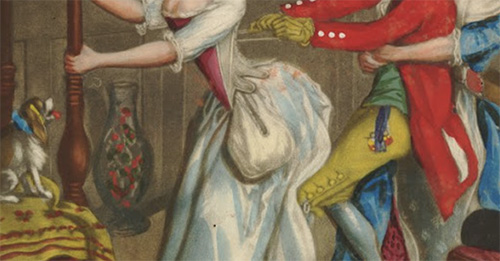 创造一个个人化空间。女性把口袋当作一种“避难所”,处在外部世界和自身的窄缝中,代表着她们与世界交流的方式。
创造一个个人化空间。女性把口袋当作一种“避难所”,处在外部世界和自身的窄缝中,代表着她们与世界交流的方式。
在「捉迷藏」中,「口袋」的概念被无限延伸至城市。以类似童年「捉迷藏」游戏的展开方式,「捉迷藏」里的「捉(seek)」和 「藏(hide)」同时发生 - 捕捉城市里的可能性「口袋」,藏蔽那些极为日常的物件;又或者是谨小慎微地藏蔽那些私人域限,捕捉更直接、更贴近本能的日常。坚固的城市在此刻不再是一个单一的结构,世界和真实的概念变得模糊,里外反转,混沌互渗。
19 世纪的欧洲正处于天花病大流行时期,记载中一位老妇人总在口袋里放着一只干蟾蜍,作为预防天花的防腐剂。「捉迷藏」也是我的袋中灵药。
2023
video installation
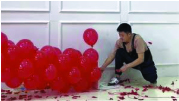 ;
for years, South Koreans have launched propaganda balloons across the Korean Demilitarized Zone, with
anti-Kim regime leaflets attached2
;
for years, South Koreans have launched propaganda balloons across the Korean Demilitarized Zone, with
anti-Kim regime leaflets attached2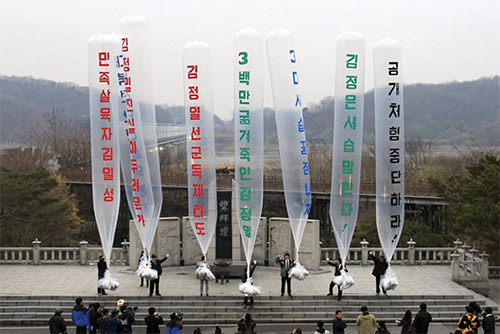 ;
in my hometown Xiamen, there is always a gigantic tethered helium balloon floating overhead in the
sky3
;
in my hometown Xiamen, there is always a gigantic tethered helium balloon floating overhead in the
sky3 ;
at the beginning of last year, a Chinese high attitude balloon flew across U.S. and Canadian airspace,
sparking diplomatic rows4
;
at the beginning of last year, a Chinese high attitude balloon flew across U.S. and Canadian airspace,
sparking diplomatic rows4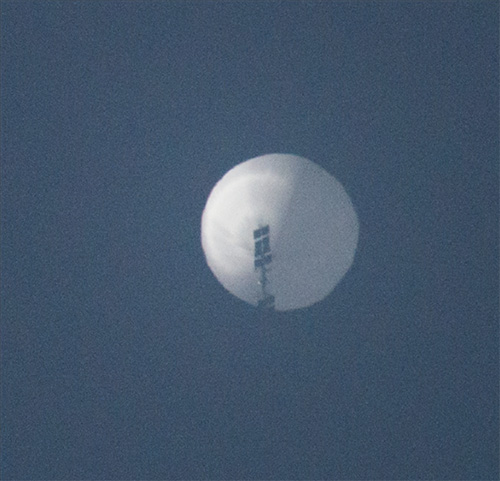 .
.
Balloons can gently traverse fences, regulations, and gravity, capturing the landscape, state secrets, and the smiling faces of children. The sounds of gunfire, explosions, bursting balloons, and blooming fireworks interweave at this moment, mirroring one another.
在这个作品中,气球和烟花参互成文——其串接起多个私人回忆和新闻事件——近年,中国逐渐严管烟花爆竹燃放,人们想出了各式替代办法,有些商家把红气球串成像葡萄一样的长串,当我们把它们快速拉过一个金属小环,气球接连爆炸,替代鞭炮1
 ;韩国活动人士曾多次在韩朝边境放起印有宣传标语的透明长条状氦气球,气球打结处用大袋子装满了批判金氏政权的传单2
;韩国活动人士曾多次在韩朝边境放起印有宣传标语的透明长条状氦气球,气球打结处用大袋子装满了批判金氏政权的传单2 ;家乡厦门上空总是飘着一个载人氦气球,已是「著名景点」3
;家乡厦门上空总是飘着一个载人氦气球,已是「著名景点」3 ;去年年初,中国的高空气象气球曾多次飞入美加领空,引发外交事件4
;去年年初,中国的高空气象气球曾多次飞入美加领空,引发外交事件4 。
。
气球可以轻盈地越过篱障、法规、地心引力,将风景、秘密、孩子们的笑脸尽收眼底。枪炮声、炸弹声、气球爆炸声、烟花绽放声在此刻平行交错,互为你我。
2023
video installation
 that can instantaneously grow anything - flowers2
that can instantaneously grow anything - flowers2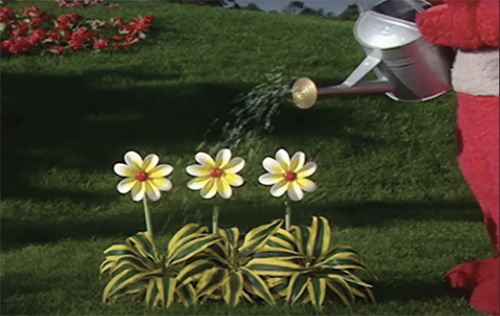 , balls, bags, living or
not.
, balls, bags, living or
not.
I borrow Po's can but present a motif antithetical to the Teletubbies' adorable realm: one of modernity's darkest magics - objects infinitely replicate through industrial assembly lines. The ubiquitous Monobloc chair3
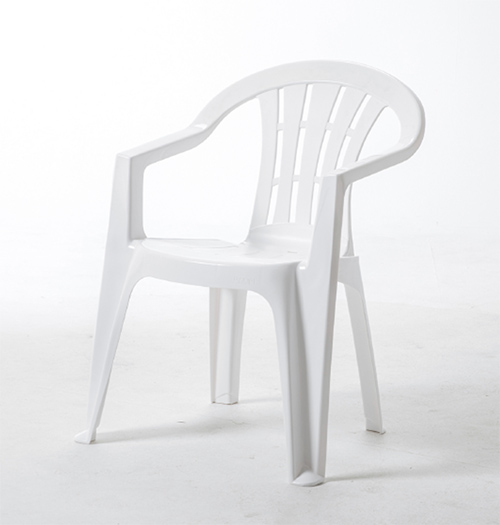 perfectly symbolizes such industrial reproduction, able to be
mass-produced inexpensively and proliferating globally like wildflowers. Yet this time, instead of
molten plastic filling the Monobloc molds, it is nurturing water from Po's can that make the Monobloc
chair magically appear, subverting the manufacturing process into an act of spontaneous generation.
perfectly symbolizes such industrial reproduction, able to be
mass-produced inexpensively and proliferating globally like wildflowers. Yet this time, instead of
molten plastic filling the Monobloc molds, it is nurturing water from Po's can that make the Monobloc
chair magically appear, subverting the manufacturing process into an act of spontaneous generation.
The magical windmill spinning, Po’s can watering, Uh-Oh! Monobloc chair mysteriously appears. Miracles once only existed in mythology or magic shows has become low hanging fruits.
「天线宝宝」这一伴随 Z 世代成长的英国流行文化产品充斥着荒诞和天真,在宝宝乐园 (Teletubbyland),一切事物都被毛绒化和魔法化,而生物和物品的界限变得模糊——天线宝宝是拟人化的电视机,抑或拟物化的幼儿,太阳是一张婴儿的笑脸,吸尘器拥有意识、名字和眼睛。
天线宝宝里小波有一件魔法喷壶1
 。在剧集中,小波用它浇灌了花2
。在剧集中,小波用它浇灌了花2 、拉拉的球、丁丁的包、迪⻄的帽子,无论是作为生物的花,还是作为物品的包都在喷壶的魔法下瞬间长大。肉眼可辨的粗糙特效,反直觉的情境设定,以及魔法物品构成了天线宝宝的主要展开方式。
、拉拉的球、丁丁的包、迪⻄的帽子,无论是作为生物的花,还是作为物品的包都在喷壶的魔法下瞬间长大。肉眼可辨的粗糙特效,反直觉的情境设定,以及魔法物品构成了天线宝宝的主要展开方式。
喷壶浇水这一古老的人类种植技法本身之于大自然似乎也是一种粗糙特效。湖海蒸发聚积成云朵,又以雨洒落,种子变成万物,这一穿过了亿年的晦涩神迹,被人类手中的小小喷壶复现。
我借用了小波的魔法喷壶,但用它呈现一个似乎完全与天线宝宝可爱天真世界相反的母题,那当代最冰冷、最真实的黑魔法——大工业流水线中可通过注塑无限生产和复制的物件。Monobloc 椅3
 是大工业复制术的最佳象征,其生产特性决定了其极低的售价和多到无法统计的产量,它几乎像花草一样生长在地球的每个⻆落。在这个作品中,灌注进模具的不再是聚丙烯熔胶,而是本应该用来浇灌花草的清水;椅子不再是通过注塑模具打开后待冷却成型,而是魔法般地突然出现。
是大工业复制术的最佳象征,其生产特性决定了其极低的售价和多到无法统计的产量,它几乎像花草一样生长在地球的每个⻆落。在这个作品中,灌注进模具的不再是聚丙烯熔胶,而是本应该用来浇灌花草的清水;椅子不再是通过注塑模具打开后待冷却成型,而是魔法般地突然出现。
神奇风车转动,魔法喷壶喷洒,啊哦,神秘出现的是 Monobloc 椅,只存在于神话故事或魔术舞台的奇观在电视上变得易如反掌。神奇风车停止转动,回到我们熟悉现实的方式是关掉电视或者等待天线宝宝们肚皮上的电视开始播放,啊哦,像是坐在 Monobloc 椅上的我们做了一场梦。
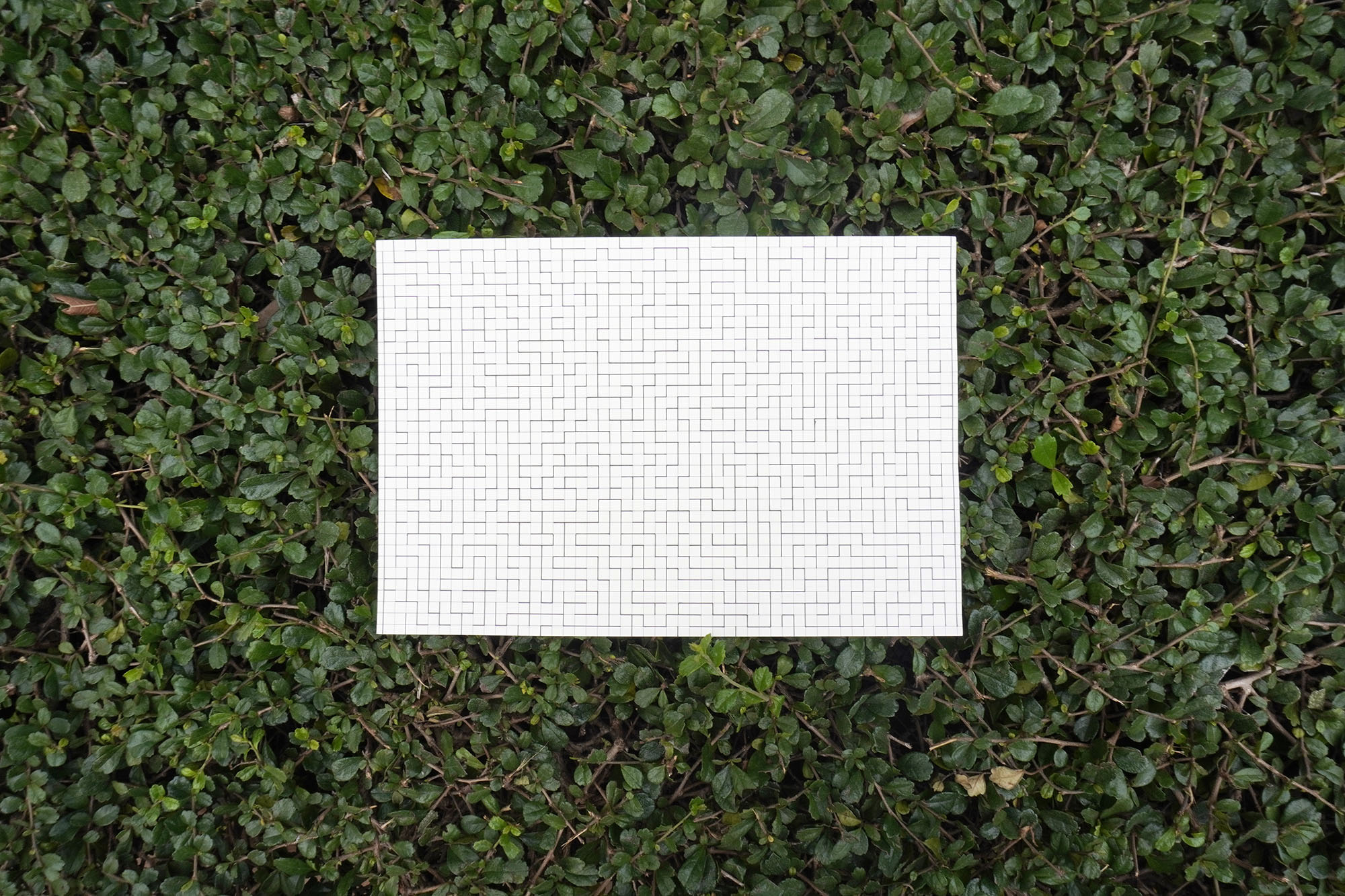
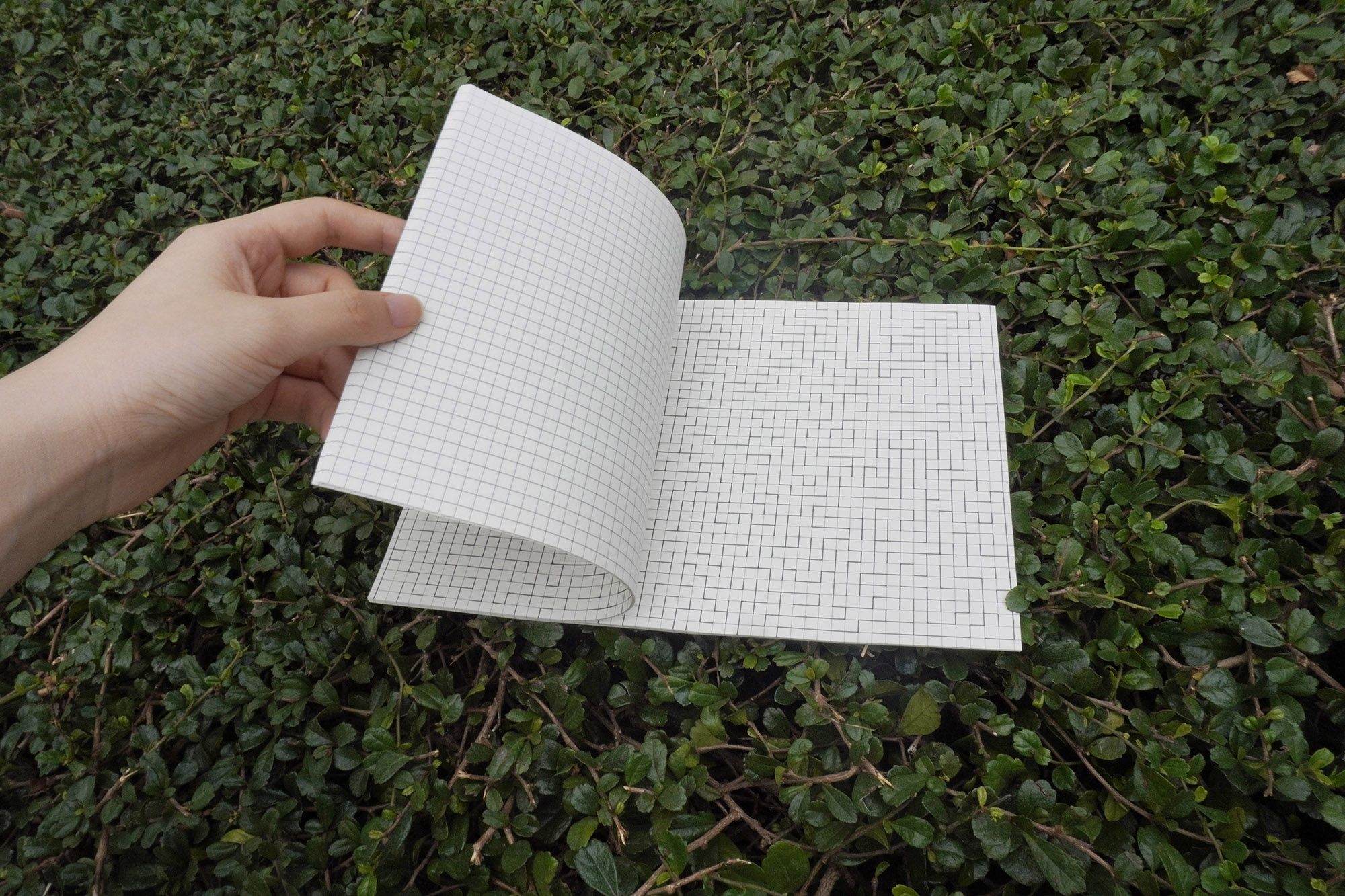

2023
graph paper, micro pen
25×17 cm
如果说迷宫的建造者仿佛在用一根魔杖指着地面说“就是这里”,那我借用了这根魔杖,对着方格本说“就是这里”。建造一个迷宫的材料多种多样,可以是石头、草皮、灌木等等,而我选择的是在方格纸的方格上叠加线条。这些线条既是迷宫的一部分,也与方格纸的线条融合,一不小心很可能会难以分辨哪些是迷宫的路径,哪些仅仅是纸面的一部分,就像迷宫本身具有的迷惑性一样。线条与线条的交织不断被重复,混沌与秩序并置,视觉上的混沌中隐藏着一种精密的秩序和结构,共同编织了一种对世界的解题方式。
2024
3 channel video installation
在这个系列中,通过投影虚拟⾏为于真实场景中,以⽆声的、不产⽣实际效果的⾏为,勾画出虚拟⾏为和实际环境的交汇。虚拟锤⼦敲打真实⽯头、虚拟削⽪⼑滑过真实的苹果、虚拟放大镜照真实的书——这些作为⼯具的物件在我们⽇常⽣活中极为熟悉,但动作的结果却与现实状况保持了差异。当虚拟⾏为与真实环境交汇,错位产⽣了⼀种强烈的故障感,仿佛隔着玻璃观察着两个世界的碰撞,类似⼀种梦境体验,在⾝临其境的同时,也有⽆法完全参与其中的⽆能感。
通常情况下,⼯具是为了解决特定问题存在的,但在这个作品中,⼯具是失灵的、故障的,⼯具不再是被动的、可预测的实体,⽽是主动参与构建了新的现实——故障不再是障碍,⽽成为了媒介,⼯具不仅仅是问题的解决者,还是问题的制造者。
During 31‘s practice, 31 have intended to immerse herself in the fabric of modern life and tease out the subtle interplay between everyday and politics. Starting from the most ordinary objects—a monobloc chair, a peeler, a hammer, or a balloon, and employing magical visual techniques—effects, filters, and layers, dream-like experiences have been fabricated. Simultaneously, those abstract and serious political narratives—history, government chambers, or capitalist production lines—are untangled and rendered into pieces and moments of fairy tales. These “naive” allegorical image narratives cast a soft-focus flare on our reality, unravelling the political undercurrents nestled within our ordinary daily moments, and, ultimately, becoming tiny yet firm occasions for us to renovate the everydayness we live by.
31目前的创作实践聚焦于创造现代生活的拓本,寻找日常物件与政治性之间的微妙关系。从最日常的物件——monobloc椅子、削皮刀、锤子、气球等等出发,通过影像的技法——特效、滤镜、图层叠加作为「拓纸」,创造出荒诞的、幻觉式的梦境体验。就像碑拓和原碑总有不同,作品里最贴近我们的那些事/物件中日常政治被发现和放大,那些抽象的、发生在历史、政府圆桌或资本主义流水线中的严肃政治被日常化和童话化。「拓片」是柔焦似梦的寓言故事,影像成为了一种修辞,重塑我们赖以生存的现实表面。
contact: sunginzeng@gmail.com